2019. november 6., szerda 18:41
By 2019, climate change had become an unavoidable topic. We cannot possibly know what the future may bring, but many predictions foreshadow what we can expect. According to a recently published study, Hungary could see significant ecological changes in the coming decades, and these changes are not going to be particularly advantageous. It is easy to forget that fact while looking at documentaries and photographs of the amazing wildlife surrounding us, but these might be the key to understanding what is at stake. As dr Zsolt Kalotás, the jury chairman of the Hungarian Wildlife Photographer of the Year Awards said:
"The wildlife photographers of today are documentarists. They are informative, interesting, and at the same time, they shape our way of thinking. The latter is especially important in these times when humanity is facing a greater challenge than ever before. When natural habitats and biological diversity are diminishing at a troubling rate and the climate catastrophe is already at the gates, the value of things that may slow these destructive processes goes up. Wildlife photographers can contribute to this, as they can help people, including economic and political decisionmakers, realize that we only have one Earth which today is still a miracle in its variety and the way that it operates."
This is the 27th time that naturArt - Hungarian Association of Wildlife Photographers announced their annual contest, and this year, there were more than 3300 entries, from which the professional jury selected 103 to be featured in the last round of the contest. Kalotás emphasised that apart from the fight for survival, many of the submitted works are focusing on the humourous and lyrical elements of natural existence.
The award-winning and shortlisted photographs are exhibited in the Hungarian Museum of Natural History until 31 December 2019.
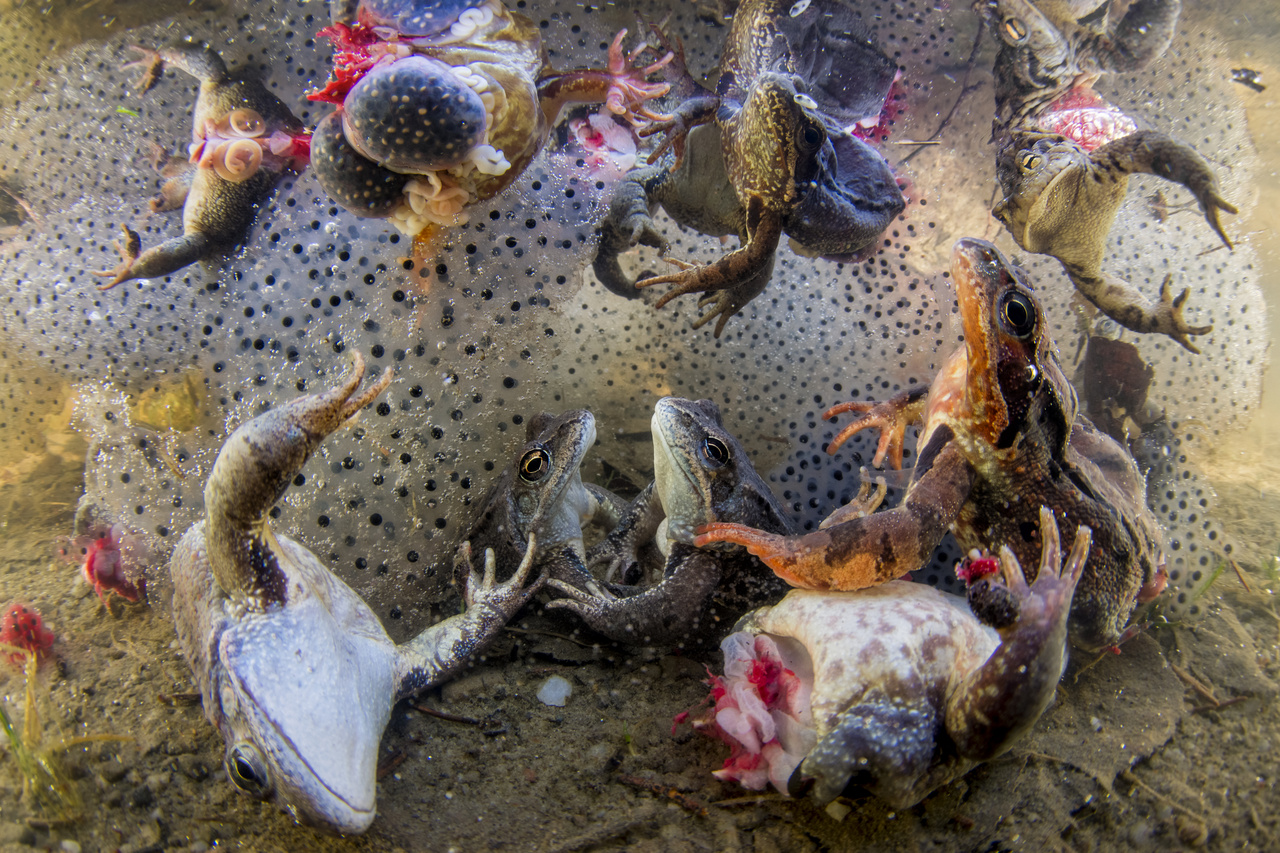
Wildlife Photograph of the Year 2019 - Bence Máté: Frogleg - "If we could see what exactly is being fed to us, we would completely change our diet. No matter if it originates from plants or animals, the people of the 21st century have no idea how their food is made, and manufacturers are trying to hide sensitive details in smaller and smaller prints. This photo calls attention to this issue. It is weird how most judge those who cut the legs off of frogs, yet nobody is outraged if someone orders it from the menu of a restaurant." (Fotó:
Máté Bence / Lenergy - Az Év Természetfotósa 2019 / naturArt)

The Earth in our hands, 2nd place - Dr László Simán: Tornado in the Dolomites - "In recent years, unusual disasters have become more commonplace. Two years ago, in the autumn, a storm had swept through the pine forests of the Dolomites in Italy, causing humongous damage. Our merry band of photographers turned silent upon arriving at the scene." (Fotó:
Dr. Simán László / Lenergy - Az Év Természetfotósa 2019 / naturArt)

Bird behaviour, 3rd place - László Hargitai: Dance on the lake - "In the springtime, flocks of great egrets descend upon the surface of the water rife with fish. Males often fight, accompanied by the peculiar pose pictured here." (Fotó:
Hargitai László / Lenergy - Az Év Természetfotósa 2019 / naturArt)

Landscapes, Award winner - Helga Urbán: Rainbow Mountain - "We were on our way with my little brother to our upcoming destination in Iceland when we happened upon this wonderful sight. I did not have much time to immortalize this special phenomenon, as it only lasted a couple of minutes. Even though it was not immediately obvious what caused these colours to appear, we found out that we saw a segment of a rainbow between the holes in the clouds." (Fotó:
Urbán Helga / Lenergy - Az Év Természetfotósa 2019 / naturArt)
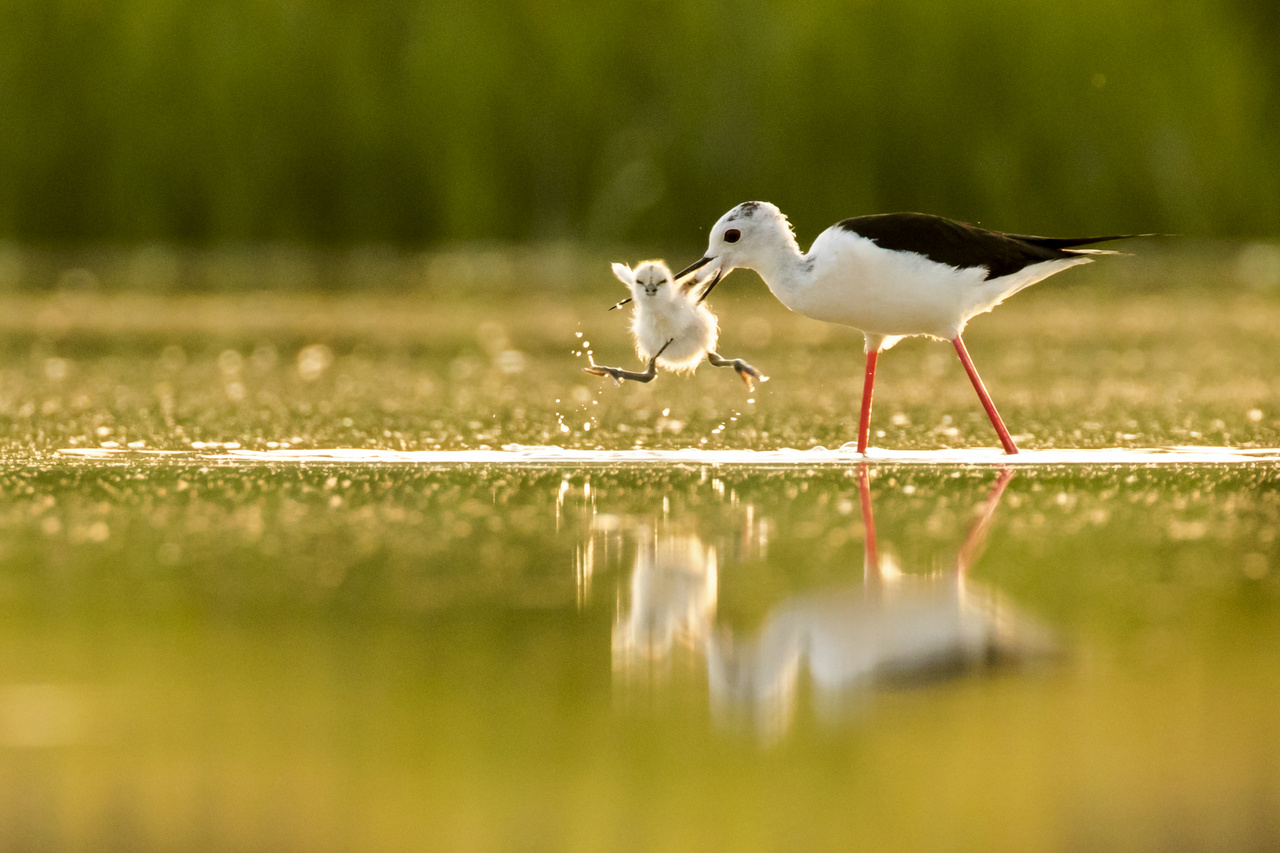
Bird behaviour, Special mention - László Tóth: Help! - "Over the years, the derelict limestone-sludge flocculation area of a large factory developed conditions similar to a soda lake, which is where I have discovered this habitat where a number of shorebird species have settled. The photo shows a black-winged stilt putting a pied avocet fledgeling into its place, a behaviour that may be instinctive, or it could be rivalry, however, I have never seen it before. Sometimes, the larger bird pushed the fledgeling under the water, sometimes he just shoved it aside. The small bird was not particularly shaken up by this. Later, I observed other birds doing the same thing with their own offsprings." (Fotó:
Tóth László / Lenergy - Az Év Természetfotósa 2019 / naturArt)
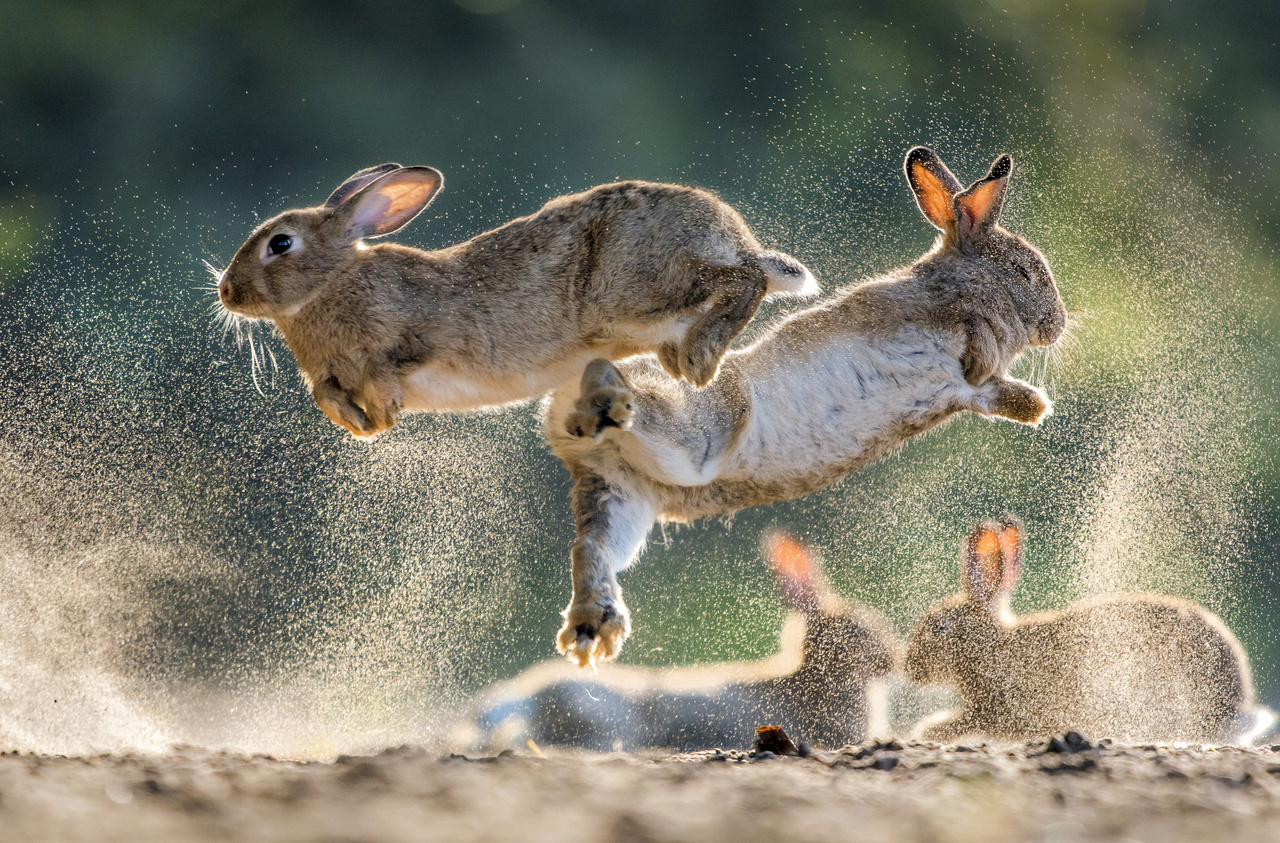
Mammal behaviour, Award winner - Csaba Daróczi: War and Peace - "In 2018, I've found a colony of European rabbits near the neighbouring village. I've never photographed rabbits before, so I was happy for the opportunity. For a couple of days, I was only observing their behaviour and I really liked it when they were jumping at each other on the sandy ground, and luckily, they were doing that quite often. The lights and the background were only ideal for around one and a half hours in the morning. I went out to take pictures exactly 72 times, and there are only three or four photos that I am satisfied with." (Fotó:
Daróczi Csaba / Lenergy - Az Év Természetfotósa 2019 / naturArt)
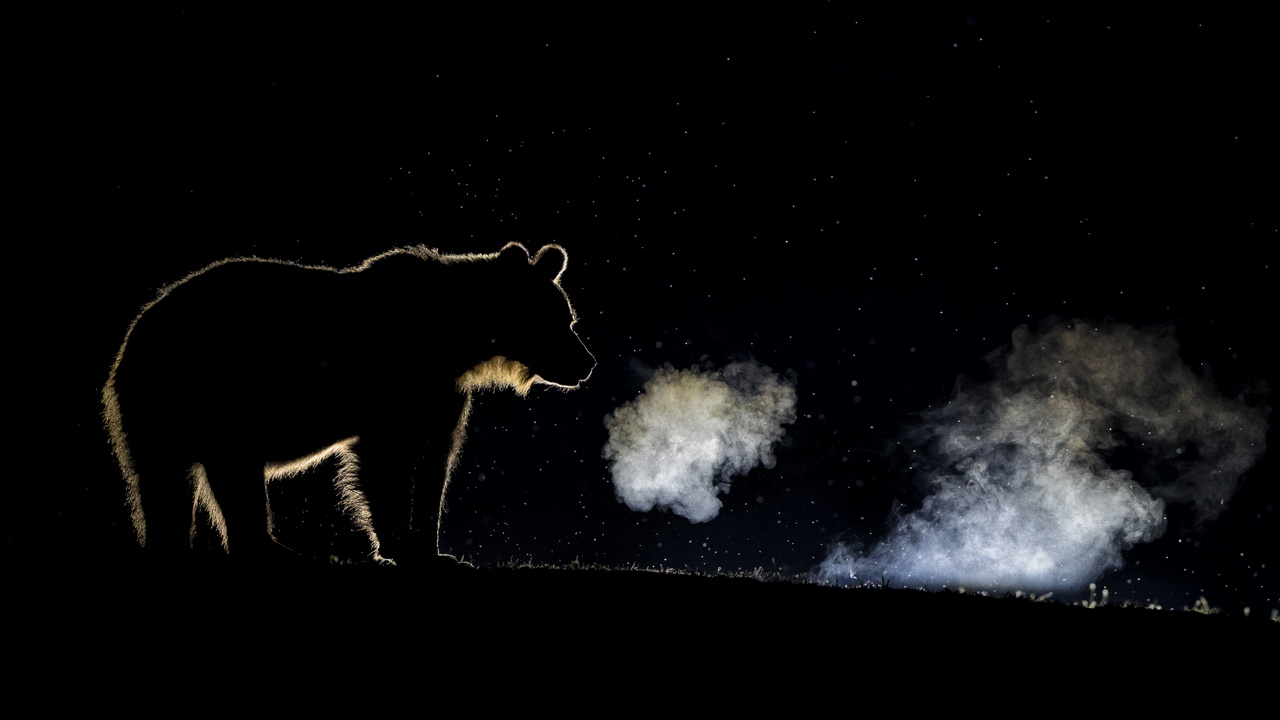
Mammal behaviour, Special mention - Bence Máté: Breath - "Contrary to popular belief, brown bears do not hibernate, they merely sleep through the winter. They do not eat, do not drink, and do not defecate, their energy demand is fulfilled by the very efficient use of their amassed fat. One of the most incredible examples of energy management is when the brown bear is suckling her cubs in her cave for two months without any food or water before the cubs emerge in the spring. The lights placed behind the hill show the breath of the animals." (Fotó:
Máté Bence / Lenergy - Az Év Természetfotósa 2019 / naturArt)
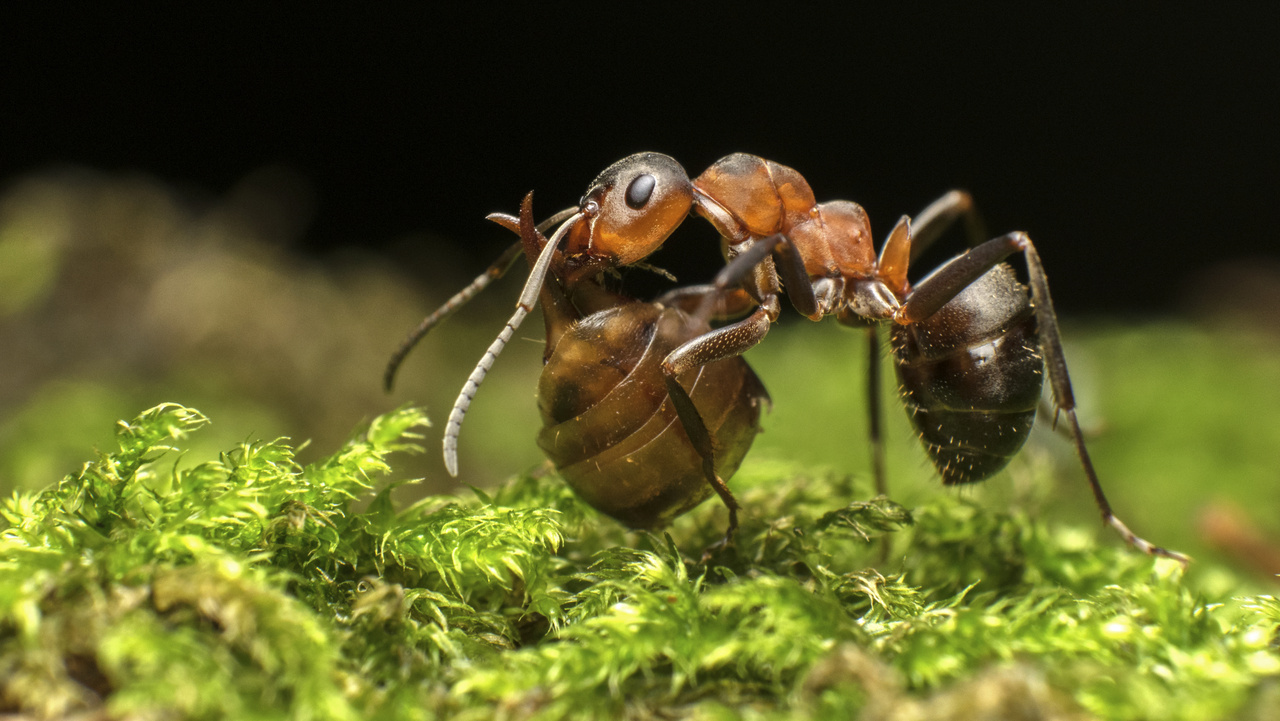
Animal behaviour, Special mention - Szilveszter Kis: The Scissor Charmer - "I've found a place in the forest of the Csíky-garden in Gyergyó where red wood-ants traverse through a beautiful patch of moss. I've visited this place multiple times before I caught the right moment when I could take a picture of the ants taking their loot back to the colony. On one occasion, I saw an ant carrying the abdomen of an earwig. The heat did not make the photography any easier, because it makes ants move even faster, so I've only had a couple of seconds to snap the picture. I've used a reverse lens for this picture, and a home-made diffusor for the built-in flash, and I've employed the tooth of a comb to manually control the aperture. This picture was shot from the hand." (Fotó:
Kis Szilveszter / Lenergy - Az Év Természetfotósa 2019 / naturArt)
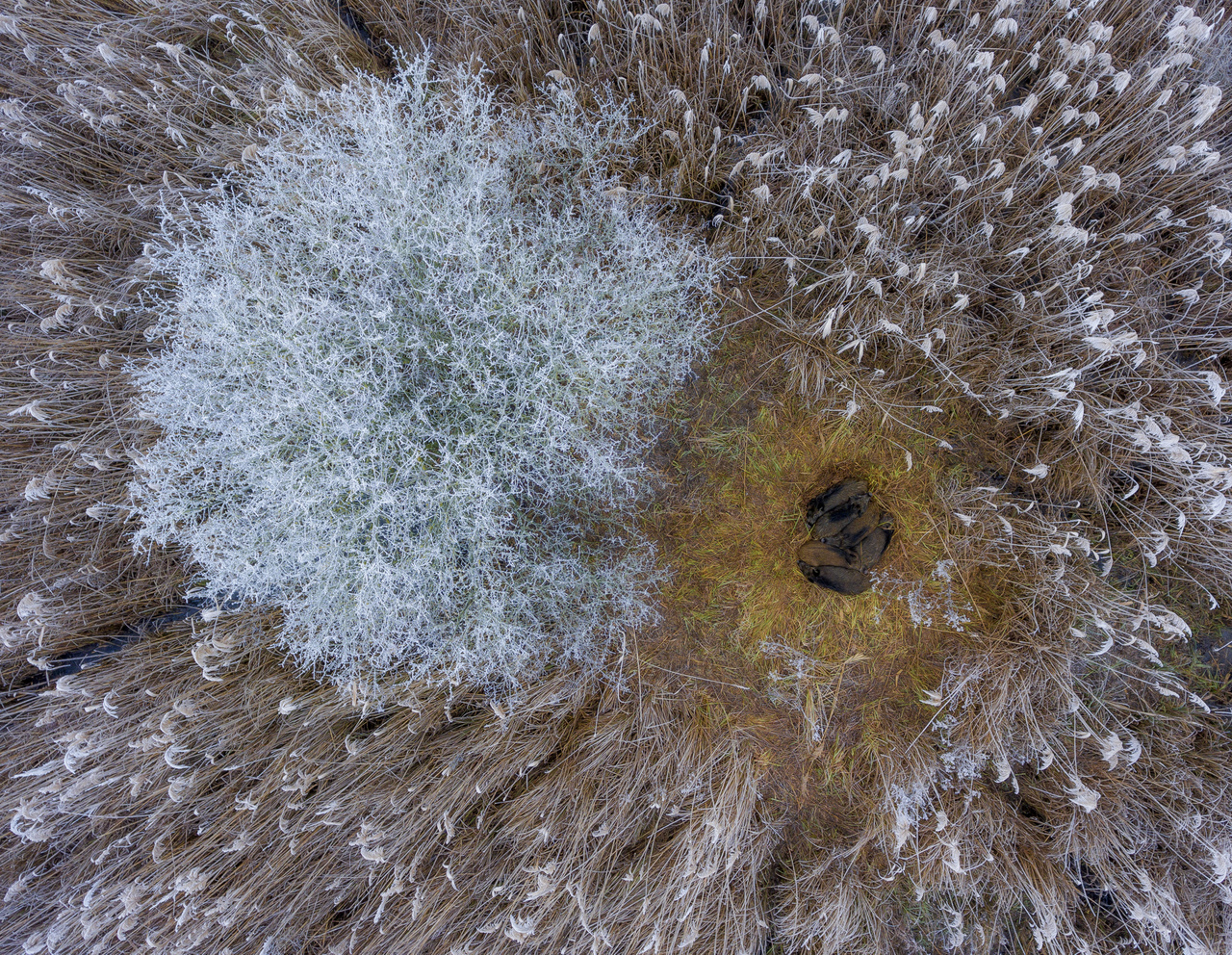
Animals and their surroundings, 2nd place - Csaba Daróczi: Winter residence - "One winter morning, I saw that a layer of very pretty frost had developed on the plants. I've been planning to photograph a carr in such conditions for a long time. As I only had to get to my workplace by nine, I jumped into my car and went over to the forest by Kiskőrös. I quickly took the picture I wanted to take, and as I've had the time, I flew over the neighbouring reeds as well. That was when I noticed a family of wild boars sleeping amongst them. I carefully descended above them, and luckily, they were not startled by the sound of the drone, despite it hovering just a few metres above them. This moment was one of the best experiences of the year for me." (Fotó:
Daróczi Csaba / Lenergy - Az Év Természetfotósa 2019 / naturArt)
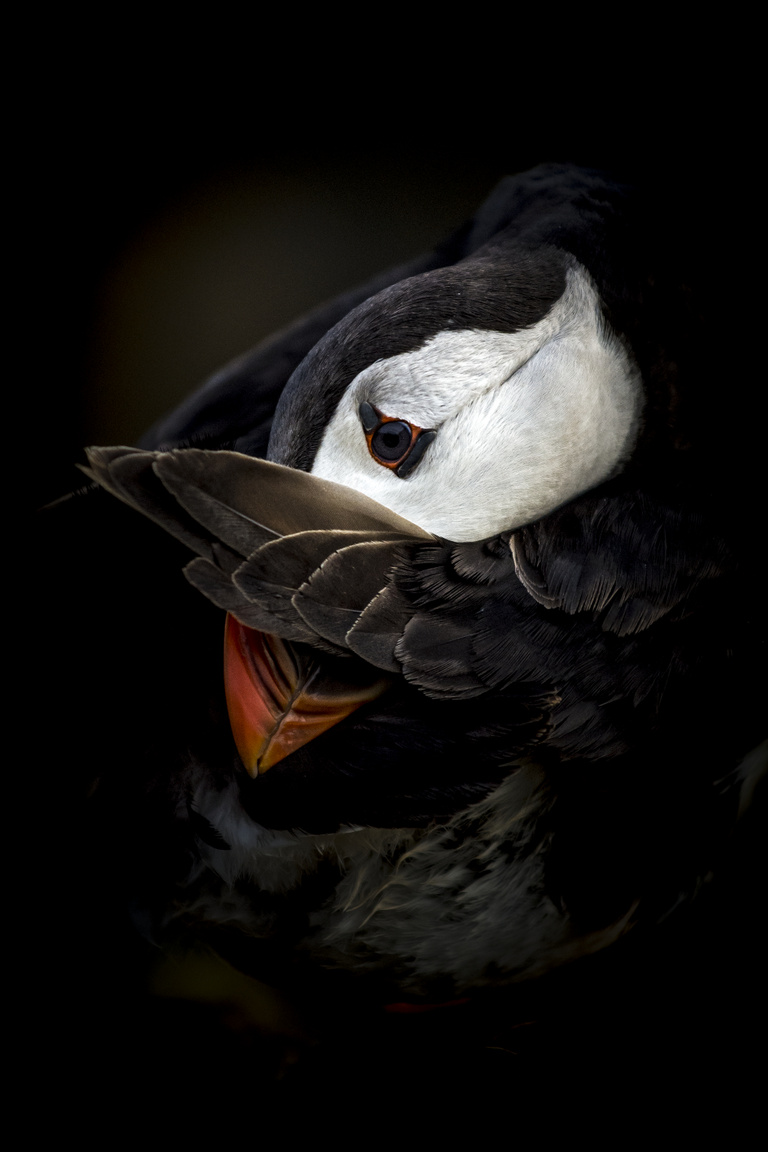
Animals face to face, Award winner - Csaba Tökölyi: Shy puffin - "A grooming puffin hides its face behind the tip of its wing. Of course, it's only us, humans, who see such an emotional gesture, but for the bird, this is one of the most important orders of the day: It is caring for its feathers, ridding them of any dirt, dust, and parasites it finds. A clean and orderly plumage provides insulation both on dry land and out on the cold sea. The picture was taken on Skomer Island in Wales, in the time period when it is no longer buzzing with tourists who visit during the day. The birds are much calmer and braver during these times, so we can witness the most secretive moments of their lives, like when they are caring for their feathers at the end of the day." (Fotó:
Tökölyi Csaba / Lenergy - Az Év Természetfotósa 2019 / naturArt)
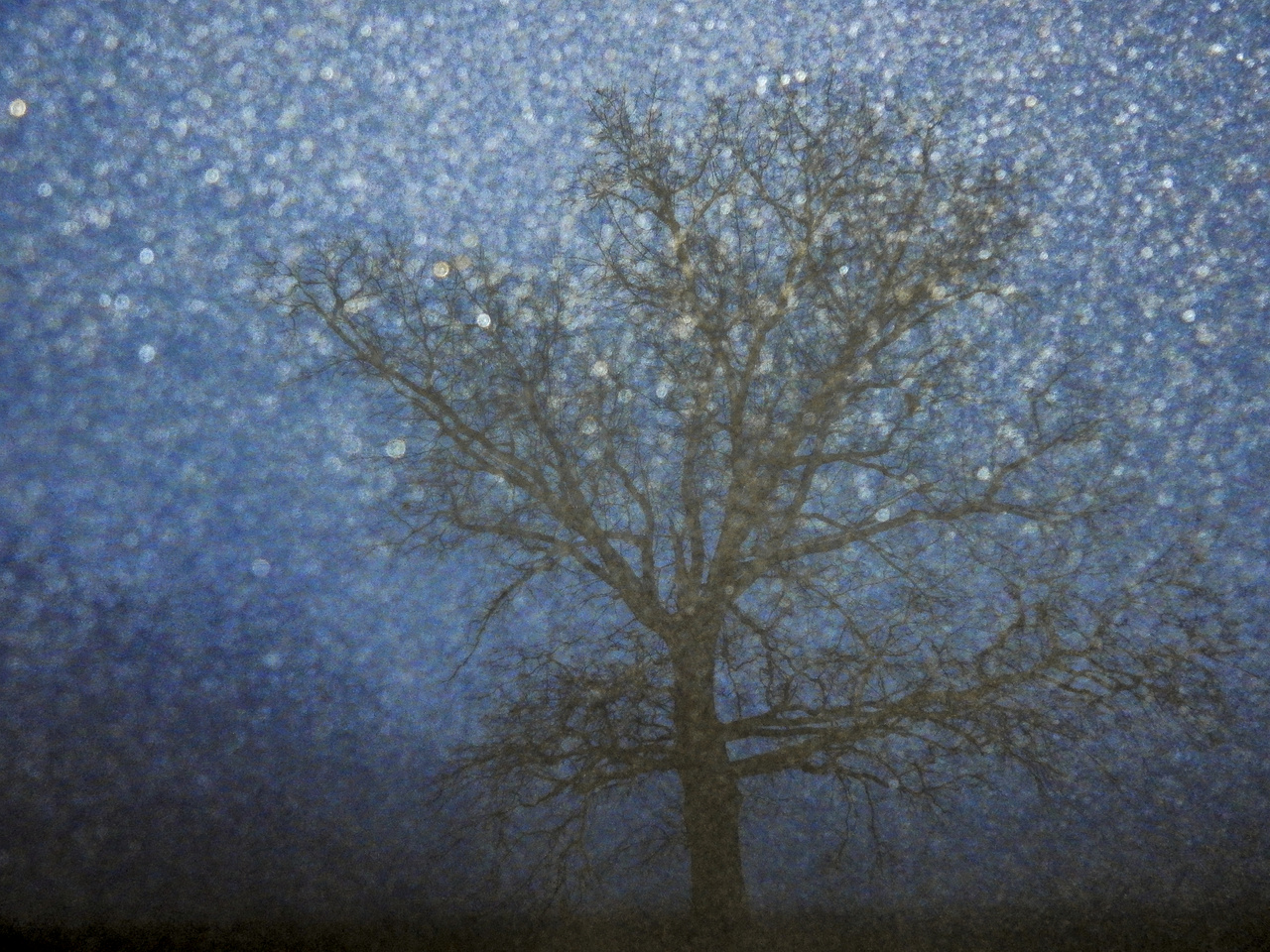
Youth category, Award winner - Tamás Koncz-Bisztricz: Fog - "We visited Ópusztaszer on a late afternoon in hopes of finding a fallow deer to photograph. Suddenly, the forest was covered in thick fog and darkness. We went out to a field by the forest, where there is an old oak tree. I used the built-in flash for these pictures, the circles you can see on the photo are the reflection of the flash on the droplets of mist." (Fotó:
Koncz-Bisztricz Tamás / Lenergy - Az Év Természetfotósa 2019 / naturArt)

Composition, shapes, and experimentation, 3rd place - Norbert Kaszás: Hide and seek - "In late March, as I was taking pictures of pasqueflowers, I found this little peacock moth on the Strázsa-hill near Esztergom. I immediately suspended flower photography, as there would be plenty of opportunities to do that later. From that point on, I only concentrated on the moth, as this was the first time I've seen a member of this species. I was mostly drawn to its feathery antennae, that is what I tried to photograph in an interesting way. I was so lost in taking pictures of the antennae that only when I arrived home did I realise that I haven't taken a single picture featuring the entire moth." (Fotó:
Kaszás Norbert / Lenergy - Az Év Természetfotósa 2019 / naturArt)
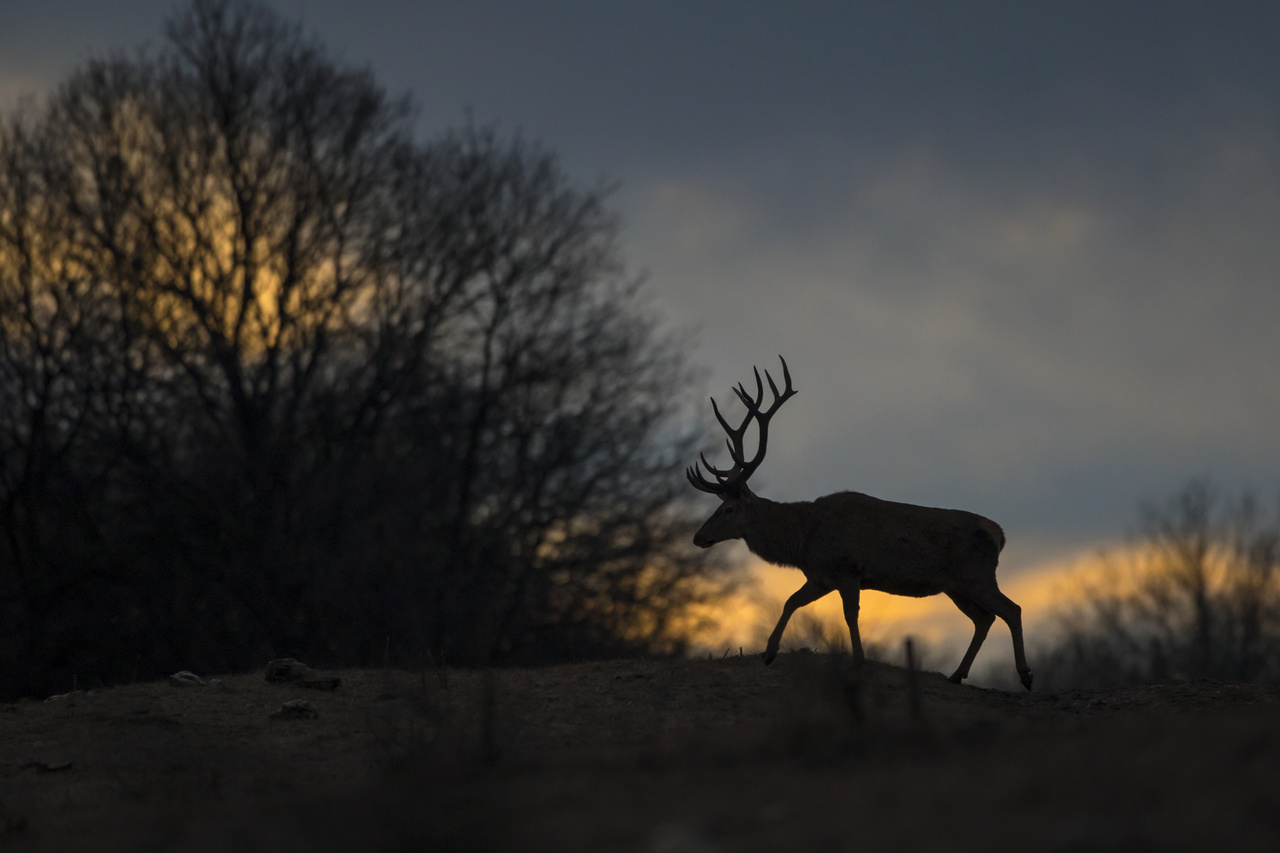
From dusk to dawn, Special mention - József Mesterházi: The Doyen - "I met this stag entering the forest in really special winter lights. Near the end of scouting, I've noticed that this is not your usual sunset, and I hurried to the clearing on the horizon filled with hope. I waited. The light was diminishing, but my hope remained. A little while later, the long-awaited stag slowly walked through the clearing right in front of me. I was lucky." (Fotó:
Mesterházi József / Lenergy - Az Év Természetfotósa 2019 / naturArt)
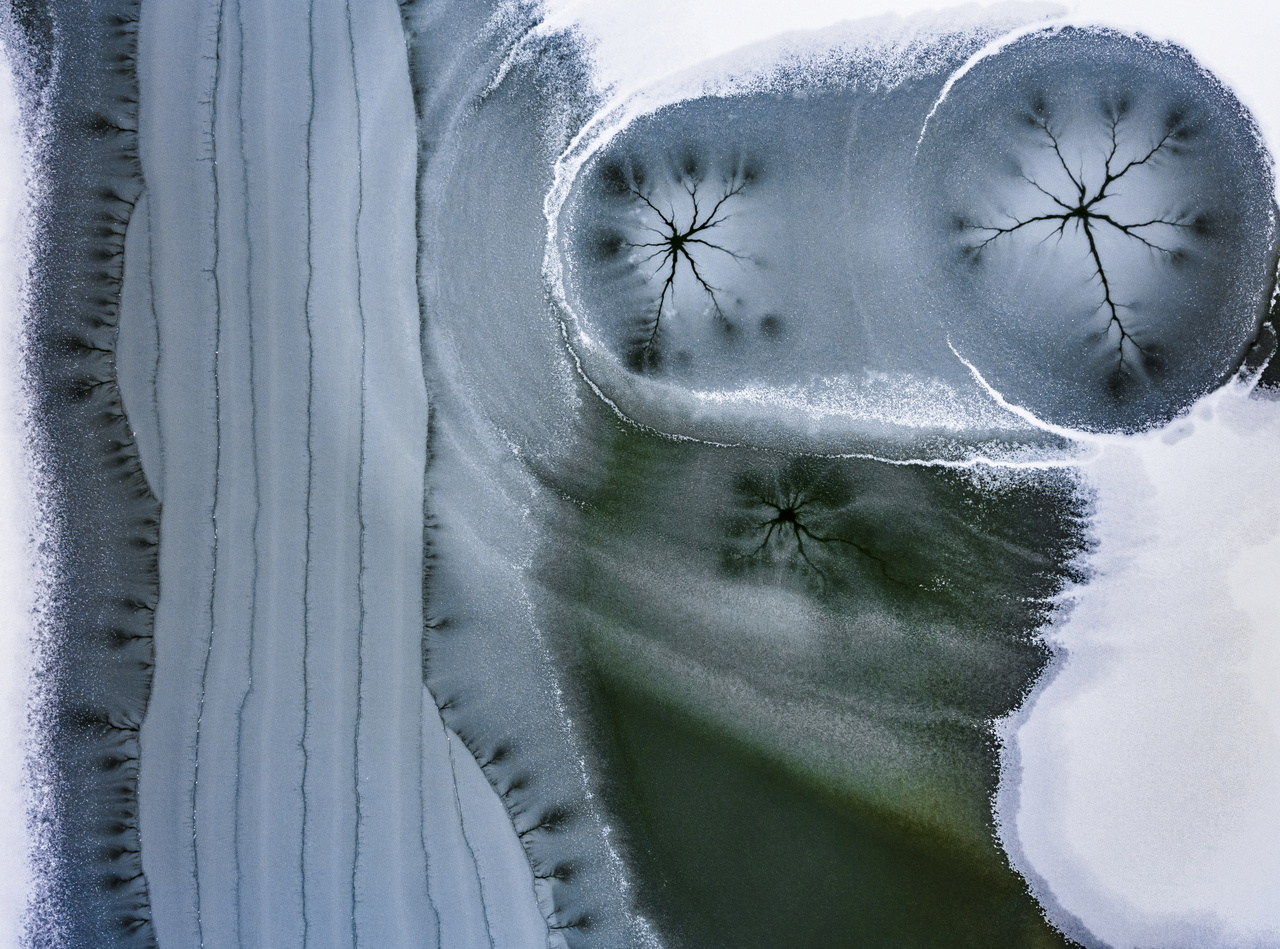
Composition, shapes, and experimentation, Special mention - Csaba Daróczi: Ice stars - "I've been watching these shapes for quite some time, but I never could take a good picture of them. Ice stars form when a thin layer of snow falls on the ice. Luckily, that was just what happened during the last days of 2018, and the resulting shapes were amazing. So one day, after work, I went out to the lake by our town, and I've found beautiful ice stars. I've managed to take a picture of the shape above, but it got dark quickly, so I decided to come back the following morning, but by then, the lake showed a completely different face. I've spent the next couple of days going from lake to lake, and I could take pictures of several interesting shapes created by this phenomenon." (Fotó:
Daróczi Csaba / Lenergy - Az Év Természetfotósa 2019 / naturArt)
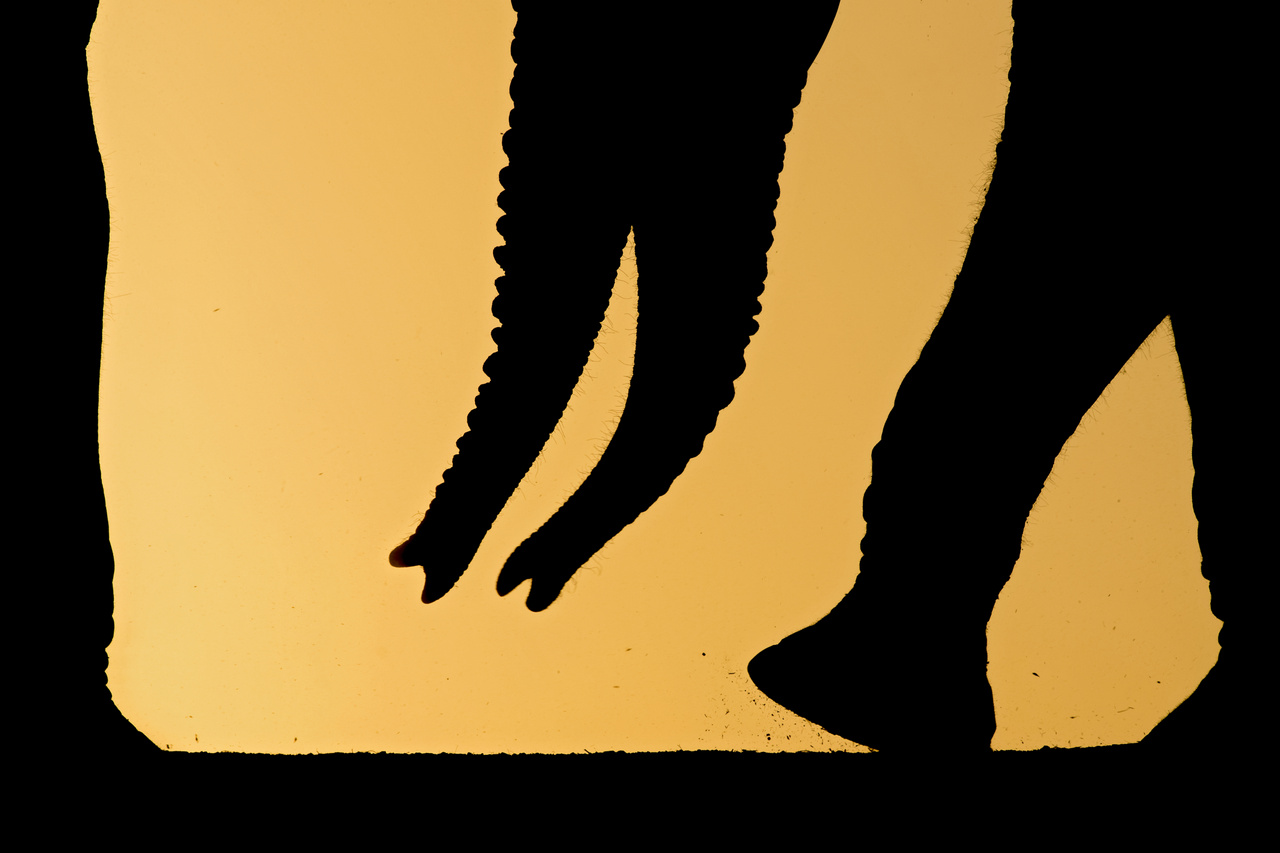
Composition, shapes, and experimentation, Special mention - Bence Máté: Trunks - "A composition of trunks and feet of elephants in the sunset. Taking this picture was preceded by weeks of research, experimentation, and searching for interesting compositions. Earlier, I tried taking photos from further away, showing the entire body of the animals, however, I later thought I'd give it a shot and try to find compositions featuring just certain bodyparts highlighted by the unique light conditions." (Fotó:
Máté Bence / Lenergy - Az Év Természetfotósa 2019 / naturArt)
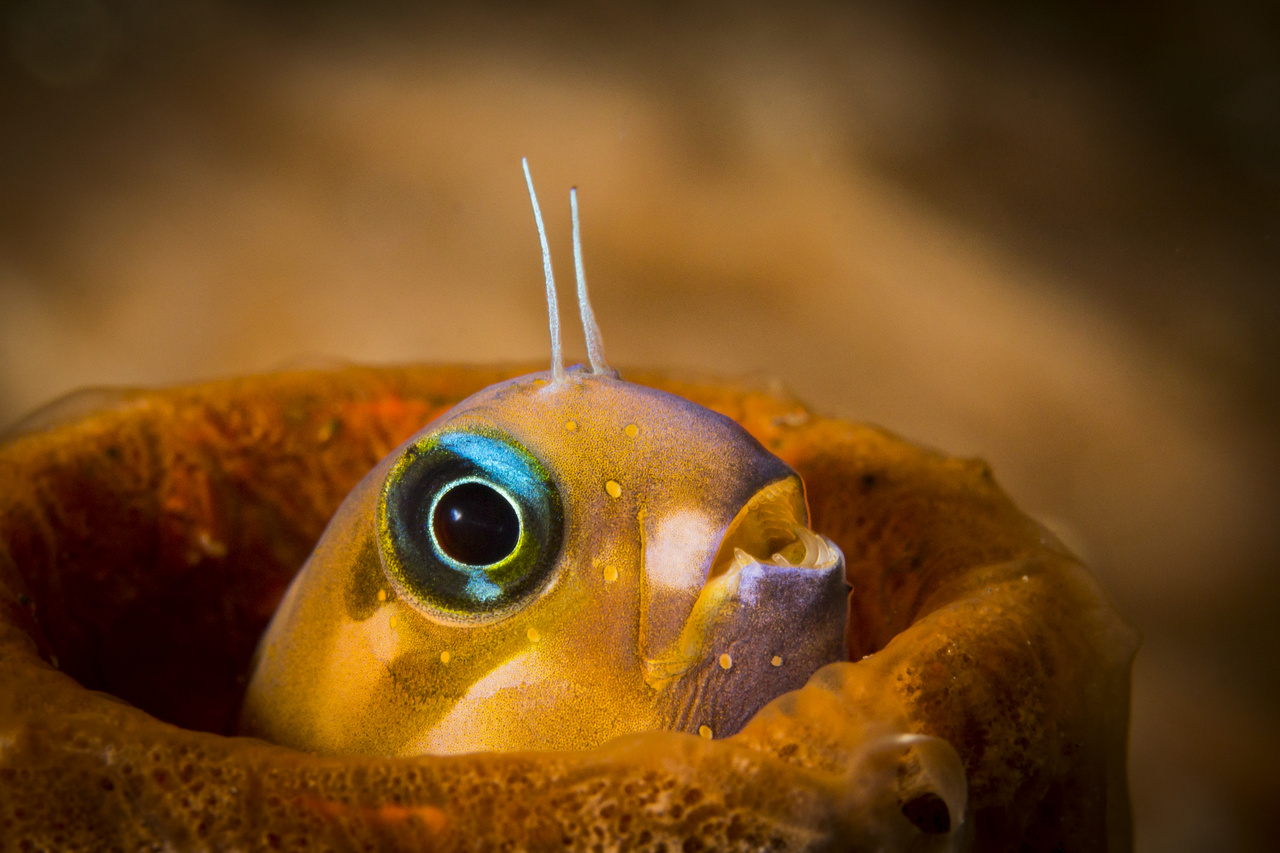
Life underwater, Special mention - András Pohl: Tube dweller - "This picture was taken in Bali, Indonesia at the Tulamben Coral Garden scuba diving area, at the depth of 20 metres. The artificial reefs here offer shelter for all kinds of animals, life is bustling on them. This small fish found a home in a rusting iron pipe, and only ventured out of there for small distances, returning to the pipe quickly and disappearing in there for minutes at a time." (Fotó:
Pohl András / Lenergy - Az Év Természetfotósa 2019 / naturArt)
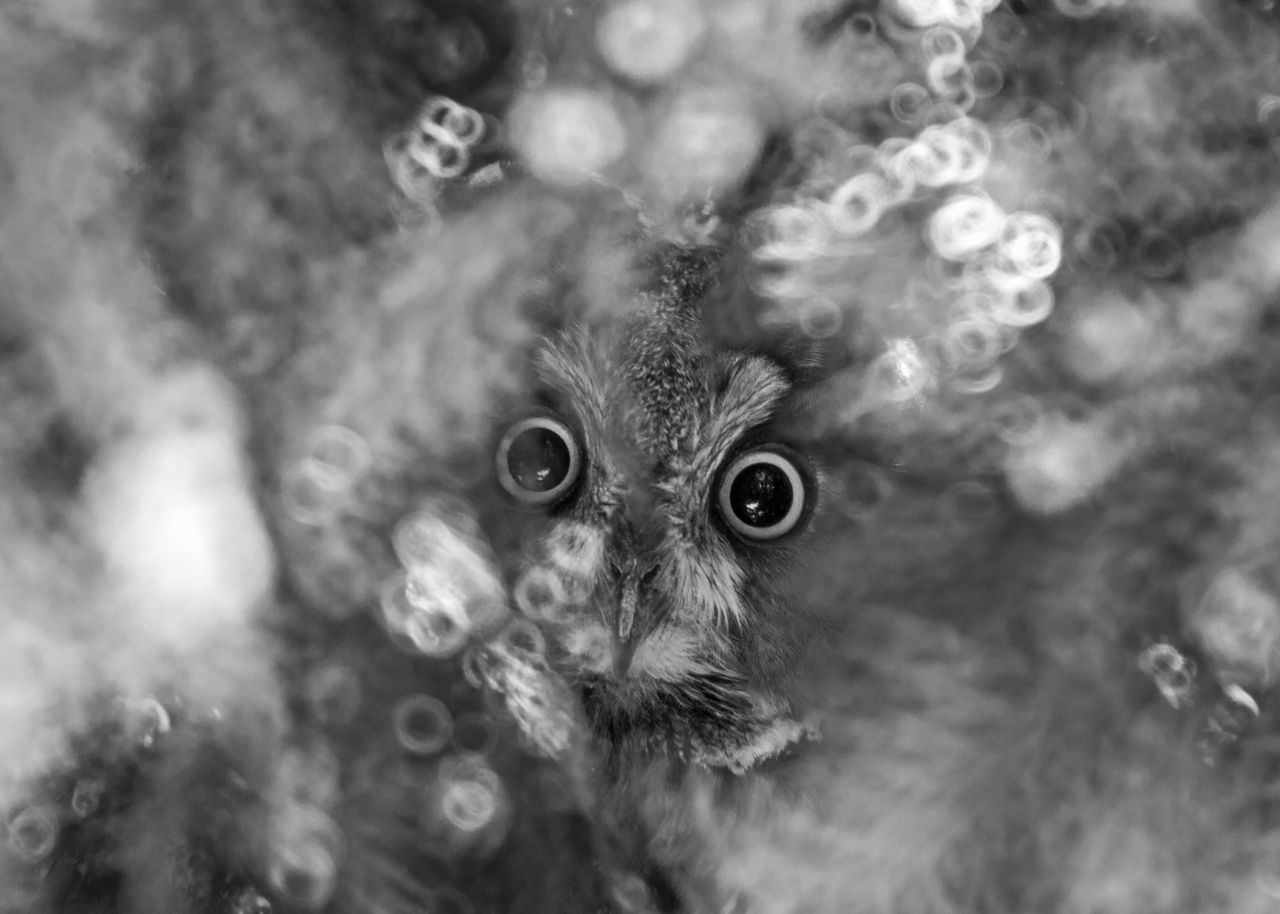
Animals face to face, Special mention - Anna Vadász: Owl eyes and ears - "The wise eyes of eared owls are watching over the fast-paced city life of humans, to whom they are getting ever closer due to increasing urbanisation. Calmly sitting on conifers, they often rest after a tiring nighttime hunt on spruces found within the limits of cities and towns. If we are attentive and careful, and we act like we did not notice them, they won't fly away, instead, they'll be watching our every move with wide and curious eyes." (Fotó:
Vadász Anna / Lenergy - Az Év Természetfotósa 2019 / naturArt)
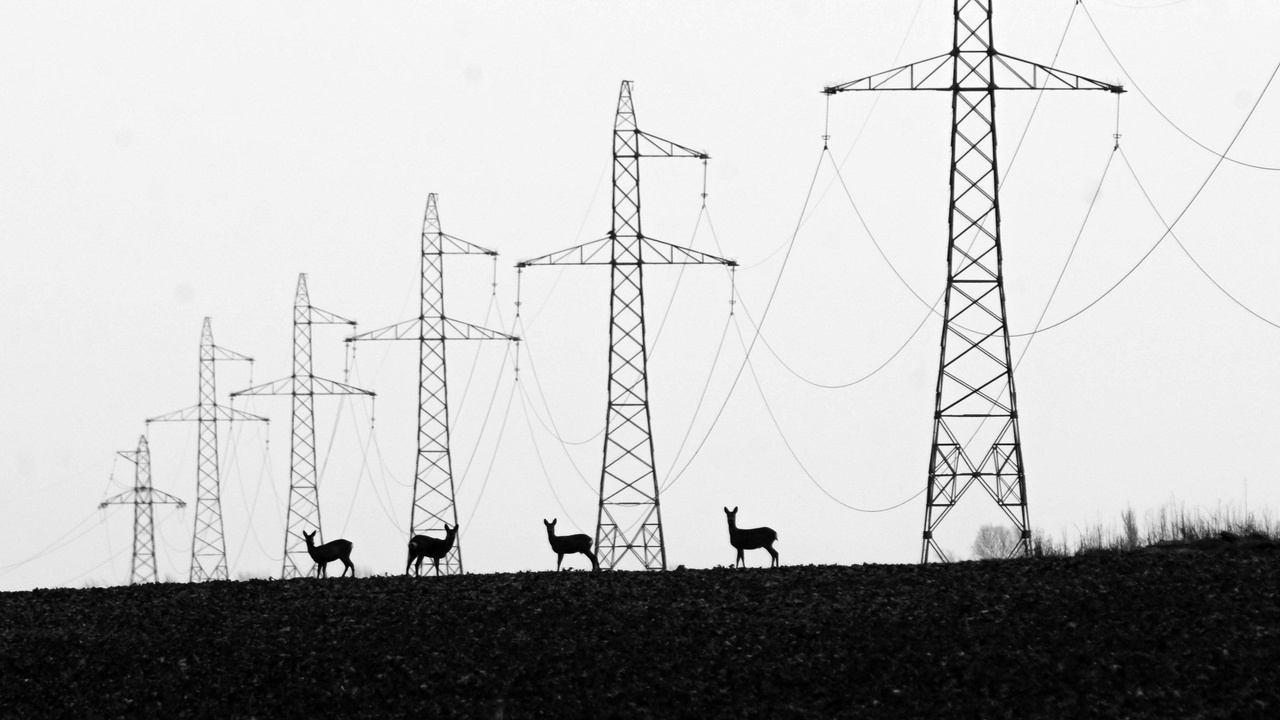
Sustainable energy and nature, Award winner - János Lakatos: Electrified - "These deers were grazing below the high voltage wires stretching above the fields by Csongrád. At first, the scene did not seem particularly interesting, but as I kept walking, the proportions became better and better." (Fotó:
Lakatos János / Lenergy - Az Év Természetfotósa 2019 / naturArt)

















